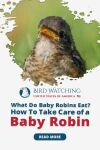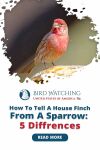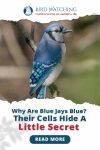![7 Cute Duck Breeds with Yellow Ducklings [24 Pictures!] Thumbnail](/assets/resized/img/posts/yellow-duckling-breeds-100x150.jpg)
What’s This Post About?
The fiction that all of us grew up reading has us convinced that ducklings are supposed to be yellow. The reality is quite different, and the duckling color depends on the breed they belong to, not our fiction-influenced mindset!
Even though all ducklings are not yellow, there are quite a few that have a striking resemblance. Distinguishing one duck breed from another may be difficult, especially when the ducks in question are hatchlings. Confirmation is often only achievable once the bird has matured.
Perhaps fiction also derives this association because several breeds like Mallards, Muscovy, Call, Pekin, Saxony, Magpie, Wood, Indian Runner, and Aylesbury Ducks have yellow offspring. Not all of them are entirely yellow; some have markings while others differ in the shade.

7 Duck Breeds with Yellow Ducklings
Because of selective breeding, domesticated ducklings are yellow. Pekin ducks and call ducks are the most common domestic ducks, and their ducklings are yellow. Ducklings of other notable duck breeds, such as mallard and muscovy, are partly yellow.

What’s most surprising is how each breed starts from having a similar yellow coloration and transforms into completely distinct birds. Here are seven cute duck breeds with yellow offspring:

1. Mallards
Apart from Muscovy ducks, Mallards are native to most nations in the Northern Hemisphere and are believed to be the ‘father’ of all domesticated ducks.
Mallard ducklings are not completely yellow but have a considerate amount of it classified in this category. The newly hatched mallard has a yellow face but with black streaks by its eyes.
It has a black back with significant yellow patches that go all the way up to its head. It has an entirely yellow underside. The beak and legs of this duckling are black.

Two months after birth, the duckling becomes a juvenile. The juvenile may begin flying between three and four months when its wings have fully grown for takeoff.
PRO-TIP
You can confirm a mallard’s juvenile stage from the sight of purple speculum features.

As the bird matures, its appearance changes drastically. A male mallard will go from a yellow head to a glossy bottle-green head. It has a white collar that parts the head from the purplish-brown chest. The male adult has greyish brown wings and a subtle grey belly.
What is interesting is the three differences that set the adult male apart from the female. Ducks that cannot be distinguished from other breeds as juveniles develop differences in genders as they mature.
| Male | Female | |
|---|---|---|
| Bill | Yelloe | Orange and Black |
| Breast Feathers | Reddish-brown | Brown |
| Centre Tail Feather | Curled | Straight |
Mallards are tiny enough to be able to fly. Mallards do not take captivity well, so unless you can offer a beautiful giant cage, there is a danger of them flying away and not coming back. Mallards lay a lovely green egg and are pretty active and chatty.

Did you know?
They have one of the worst eggs producing rates among domesticated breeds, making only a few eggs every breeding season.
2. Muscovy Ducks
Muscovy ducks are the only farmed duck breed that does not have mallard ancestors.
The breed has many color variations that can result in ducklings with yellow, brown, or a mix of plumage colors. A Muscovy can also have brown, black, gray, pink, or orange beaks, depending on whatever color variations are found in the bird.

While hatchling Muscovy ducks are difficult to tell apart from wild mallards and Pekin ducks, mature Muscovy ducks can be distinguished from mallard-derived varieties by their thicker face skin and heavier physique.
The red skin on the face of an adult Muscovy duck with its lumps is the most distinguishing characteristic.
Muscovy’s wild-type appearance is entirely black, with substantial white wing markings and a shiny greenish back. Domestic Muscovy, on the other hand, can be pure white, completely black, or a mixture.

Did you know?
The adult male Muscovy Duck is North America's biggest duck, although the female is just half its size.
These strange ducks devour large quantities of food but are poor egg layers and must never be thought of as a multi-purpose bird. Even if you let Muscovy ducks roam freely, they will most likely require supplementary feed to satisfy their voracious appetites.

They have an additional claw on each leg to assist them in doing what they appear to like the most: perching. Because these ducks can soar like wild ducks, they will require frequent wing care.
This is especially important if you hold them for longer than the needed butchering period and roam outside of their coop and play.
3. Pekin Duck
Pekin ducks have the same appearance as a duckling in most people’s minds. The young ducks are coated in yellow feathers and have orange beaks and feet. However, some have dark spots that will disappear over time as the birds brighten.

The coloration becomes creamy white as the bird matures, which happens fast. However, the feet remain golden orange. It has a golden beak that is relatively short and practically straight. Male Pekin ducks have a cluster of wavy feathers towards the rear, similar to wild mallards.

Did you know?
Most illustrations of ducks are based on the Pekin duck’s appearance.
The American Pekin is a big, well-built bird. If you view from the side, the body is rectangular and tilted at roughly 40 degrees to the horizontal. It has a tail that protrudes over the backline. The breast is smooth and wide, with no visible crest. The neck is wide, and the face is big and rounded.

Pekin ducks make a lot of noise. They will scream to attract your attention if they believe you are overdue for feeding time or any other moment they think you should come to give them additional attention. They also like mud and water.
Did you know?
Pekin ducks are the most popular duck breed in the United States.
These ducks lay a considerable quantity of white eggs. Their rapid development rate and light-colored body make them ideal meat birds to breed.
Pekin produces over 90percent of the duck meat consumed in the United States. A large bird with a peaceful, friendly, and inquisitive nature, as well as enough eggs and meat if desired.

4. Saxony Duck
Like most ducklings, a Saxony duckling is also entirely yellow. It has a light pink beak and yellowish-orange feet. As the duckling matures, it starts to resemble the Silver Appleyard.
A mature Saxony’s head is round in form and medium in size. The Saxony has a deep, broad breast. The abdomen is vast and full, with no keel formation. The body is tilted at a 25-degree angle to the horizontal.

Male has the same Mallards’ distinctive design, but their colors are unlike any other breed. The male has a blue-gray head and a white neck ring. It has greyish wing patterns, a chestnut breast, and a cream belly.
The females have a light gold coloration with cream face stripes. There is one line that crosses the eye, and the other one is near the beak. It has a gold, yellow belly with a yellow beak and orange feet and legs. They are peaceful, curious, and excellent grazers.

5. Magpie Duck
The Magpie duckling has light yellow feathers with a brownish tint on the head and the back of the body. It has a yellowish-orange beak and feet. Magpie ducklings tend to imprint more strongly on their human caretakers than other breeds of young ducks.
The species gets its name from its unique black and white plumage. It is primarily white with two substantial black patches on the back and top of the head. The black crown of the bird will usually get stained with white as it matures, and it may ultimately become entirely white.

The yellow bill or orange becomes green as the bird gets older. The legs and feet are orange, although they may have a speckled appearance. The neck is relatively lengthy, and the breast is curved.
The body of a Magpie duck is slender but not as conical as an Indian Runner duck. A Magpie standing in a relaxed position has a body position somewhere between 15 and 30 degrees horizontal.

Magpie ducks are often peaceful and gentle. They are not as readily frightened as their Indian Runner ducks, but they are still more nervous and panic-prone than Pekins.
Magpies, like virtually other farmed duck breeds, are unable to fly. They can raise their bodies off the ground and travel ahead of a few feet by flapping their tiny wings, but that is the maximum.
6. Indian Runner Duck
When the Indian Runner ducks were initially introduced to the United States, they were nicknamed ‘Penguin Ducks’.
The Indian runner duckling is much like the Pekin duckling in terms of coloration. The young duck is yellow overall with a bright orange beak and feet. The only notable difference is their posture which makes them stand out.

Because their stance varies from most other ducks, Indian runner ducklings are the simplest to recognize. Runner ducks hold their bodies upright, unlike most other varieties with their bodies at a 45-degree inclination. This gives them a penguin-like look.

Did you know?
From the end of their tail to their head, Indian Runners measure between 20 and 26 inches in length.
Indian Runner ducks are a domesticated species with tiny wings that prevent them from flying. The average weight of these gentle and easy-to-handle ducks is approximately four and a half pounds.
Indian Runners are regarded to be a calm and peaceful egg duck breed unless frightened or harassed. Instead of clean white eggs, they lay giant greenish-colored eggs.

This breed has more color variations than any other farmed duck species. Cocoa, black, white, blue, light brown, dark brown, and a brownish shade of green are the most frequent hues of Indian Runner ducks.
7. Aylesbury Duck
An Aylesbury duckling is the sheer image branded in our minds of a typical duckling. It has a soft yellow plumage with a light pink beak.
Until eight weeks after birth, the male and female Aylesbury duck is not identifiable. After molting, you begin to see differences, like the male having two or three tail feathers curled, unlike the female. The male also has a huskier and quieter quack.

The mature Aylesbury duck is a giant duck breed with pristine white feathers and vivid orange feet and legs. Its legs are positioned in the middle of its body. It stands with its underbelly parallel to the surface, creating a ‘boat-shaped’ impression of the body.
It features a long and narrow swan-like neck and a large pink bill that protrudes from the head. This is a significant feature that will help it distinguish itself from other ducks like a Pekin. Remember that a Pekin has an orange bill while an Aylesbury duck’s bill is pink.

WARNING!
Because these ducks are prone to obesity, it's crucial to limit their food intake and urge them to forage.
How To Identify Duck Breed?
Ducks are among the trickiest waterfowl species to recognize. Ducks come in various colors, shapes, and sizes, and they frequently form combined flocks with ducks of closely related species. Ducks may be identified by appearance, activity, habitat, and sounds with experience.

If you already know duck breeds, many duck species may be easily identified visually. Because they are bigger birds observed on open water, distinct field markings are frequently simple to distinguish for accurate identification. Look for these traits when watching ducks to help you identify the species.
Head: Check for the bird’s head shape. See if there are any specific markings or patches on it.
Bill: Check for the color and size of the bill. See if the bill is the same color as the feet.
Speculum: Notice the color of the speculum and how large it is compared to the rest of the wings.
Plumage: Observe the color of the plumage and any specific markings or patterns on it.
Neck: Check to see if there is a neckline and what colors do the neckline separate.
Legs: Look at the size and color of the legs. See where they are positioned.
There are some other ways that you can identify a duck’s breed, like its habitat, sound, behavior, and feeding. The location of the bird gives a lot of information about its identification. Even though numerous ducks are located worldwide, they all like the same sorts of environment.

To help you determine the species, take note of the bird’s eating habits, as well as what it consumes and if it forages on land. Ducks don’t all quack the same way, and their quacks don’t all sound the same. Learning to identify ducks by ear might help you distinguish between them.
Many ducks are highly devoted to their breed, so if you’re puzzled on a strange duck, start comparing it to others in the flock, especially those it appears to stick close to.
Keep Reading!
Among the many duck breeds with yellow ducklings Mallard, Pekin, Indian Runner, Magpie, and Muscovy are some of the most popular ones. The majority of the species with yellow offspring transform into beautiful white ducks, but there are exceptions. Quite beautiful exceptions, if I must say!
Now that you know some of the breeds with yellow ducklings, learn more about them to identify them quickly. While there may still be some puzzling ducks, the further you examine ducks and put your classification abilities to the test, the faster you will be able to identify every duck you encounter.
The only thing you now need to make this experience better is excellent photography. Equip yourself with the best photography gear and knowledge to capture the ducks you encounter.

By David A. Swanson
Bird Watching USA
My name is David and I'm the the founder of Bird Watching USA! I started Bird Watching with My father-in-law many years ago, and I've become an addict to watching these beautiful creatures. I've learnt so much over about bird watching over the years that I want to share with the world everything I know about them!

David A. Swanson
Bird Watching USA
My name is David and I'm the the founder of Bird Watching USA! I started Bird Watching with My father-in-law many years ago, and I've become an addict to watching these beautiful creatures. I've learnt so much over about bird watching over the years that I want to share with the world everything I know about them!
![7 Cute Duck Breeds with Yellow Ducklings [24 Pictures!] Thumbnail](/assets/resized/img/posts/yellow-duckling-breeds_thumbnail-100x56.jpg)







